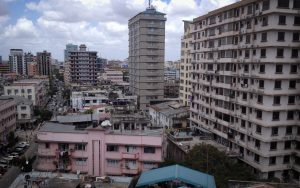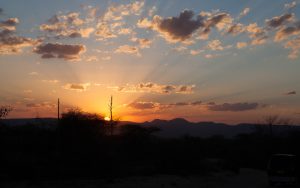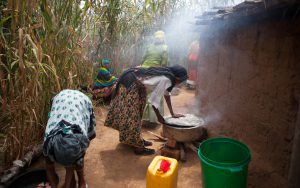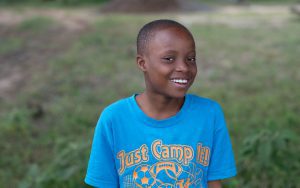One of the main reasons people venture out to Kondoa is to see the UNESCO heritage site in Kolo, which lies in the centre of one of the most impressive collections of ancient rock art on the African continent.
Within clusters of granite and gneiss rockshelters, there are approximately 1,500 rock painting sites.
One of the offices for the tour company was going to be in Kolo, and Moshi would typically be working there, so we decided to have a party to help foster a community around the tours within the village. At the same time, we’d also be painting the office green to represent the environment. This would also allow us to tell people to head to the green office to see Moshi.
We started in Kondoa town and picked up 50kg of rice for the party, three cans of paint, two bags of cement, and the rest of the plants for the women’s group in Kolo. Yasinta and Isa, Moshi’s wife, decided to do the shopping without me because prices went up when a “muzungu” was around. We packed the car full of soda, groceries, painting supplies, and the two guys who were going to be doing the painting.
We arrived in Kolo and dropped off the two painters with directions on how to paint the office—avocado green for the outside and summer blue for the inside. Then we headed to the house where all the food was going to be prepared for the party. The people there greeted us with the traditional Irangi dancing and splattered the chalky mixture.
Our next stop was to talk to the teachers at Kolo’s primary and secondary schools. Moshi was trying to build relationships with them because wanted to get the teachers on board to help the students learn about and maintain the rock paintings. We left them with trees and the two bags of cement because Moshi found out that the secondary school wasn’t able to finish a science laboratory because they ran out of cement. Helping to preserve the historical sites of Kolo got their attention, but the cement sealed the deal. So often out here, projects stalled because people simply ran out of the materials needed for completion.
By now, the office was just about finished, so we headed back. As it turned out, the painters ran out of paint, so now we had one wall that was green, and another that was blue. I’m a designer and stress about details like colour and lines, but somehow this worked. We’d be fitting in with all the other unfinished projects.
I walked back to the house where food preparations were happening. They were skinning a slaughtered goat I had bought from one of the neighbors for a surprising little money, and the women were cleaning the rice and cutting bananas, cabbage, and garlic. The house was buzzing with activity, and I spent the afternoon getting to know the women. We laughed at my Swahili and held hands when we didn’t know what else to say to each other. They often broke out into song and dance. That’s what I loved the most.
The sun went down, and about 100 people came. I was expecting it to be like a dinner party I might have at my house, where you chat and casually take a bite of food, but people were pushing to get to the front of the line because they were scared that the food would run out before they had their turn to fill their plates. Moshi told me that the food we prepared was special for the villagers. Typically, they ate nothing more than ugali and a sticky spinach dish. I had bought this all for around $50.
Moshi’s daughter sat on my lap, and I looked up at the stars to avoid looking at the chaos and hunger of the people. Sometimes I see things that I don’t want to see.
There was more than enough food for everyone, and after people had eaten, a calmness washed over the house. Children sat quietly with their sodas, and the women cleaned up the mess that was left behind. As we headed back to the car, the women sang a song of peace and a safe journey and the hope that we would see each other again.
We all sat in silence in a car crammed full of people as we drove over the bumpy roads back to Kondoa.




























































